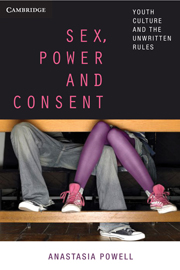8 - Prevention
Policy, programs and practical strategies
Published online by Cambridge University Press: 03 May 2011
Summary
In the previous chapters I have argued that we need to engage both young women and young men in challenging the social and cultural rules, norms or discourse, that continue to create a culture in which sexual violence to occurs. An overarching concern of this book is ultimately with the prevention of sexual violence, and it is to this issue that I now turn. In the last five years there has been a significant focus within the Australian government and in policy debates on the role of prevention to reduce violence against women, including sexual violence. This focus is reflected at federal level in the work of the National Council to Reduce Violence Against Women and their Children, and at the state level in the various departmental policies guiding responses to and prevention of violence against women. Indeed, the prevention of sexual violence is firmly on the policy agenda in Australia, and the work happening here is of international significance.
In this context, there is a need for conceptual and empirical work that brings together the issues of sex, power and consent with frameworks for violence prevention. The theoretical perspectives with which we seek to understand these issues have important implications for what we do in practice. In this chapter, I reflect both on past prevention practice and on the newly emerging models of gender-based violence prevention.
- Type
- Chapter
- Information
- Sex, Power and ConsentYouth Culture and the Unwritten Rules, pp. 154 - 172Publisher: Cambridge University PressPrint publication year: 2010



